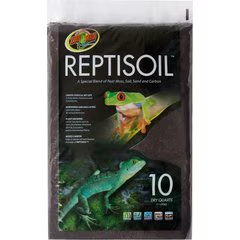Abscesses in Reptiles
What Are Abscesses in Reptiles?
An abscess is considered a swollen area or pocket of tissue located on the body that is full of white blood cells. Abscesses typically form due to an infection. In response to the infection, white bloods will fill the pocket of tissue to combat the infection. In most species, once a pus is popped or drained, the white blood cells will reabsorb back into the body.
Reptiles are a bit different. They lack the enzymes that would normally allow the body to resorb the contents of an abscess, leading to the development of firm, cheese-like pus inside a capsule in the body tissue.
Abscesses can be located on or just under the skin, or internally. They form for many reasons but all develop due to introduction of bacteria into the body.
Symptoms of Internal Abscesses in Reptiles
Since abscesses can form almost anywhere in or on the body, symptoms can vary based on location.
For external abscesses, you may see:
-
A swelling or mass
-
Trauma to the skin
-
Limping
-
Lethargy
-
Anorexia (not eating)
Common areas you may notice swellings are on limbs, the nose, vent, or ears.
Symptoms of an internal abscess can be less obvious but may include:
-
Lethargy
-
Anorexia
-
Abnormal breathing (especially open-mouthed breathing)
-
Diarrhea
-
Constipation
-
Abnormal neurological symptoms such as unsteady walking or seizures
-
One swollen/protruding eye
-
Blindness
Causes of Abscesses in Reptiles
While abscesses are a common problem for all reptiles, different species are more prone to abscesses in some spots than others.
In general, abscesses form on the nose due to stressed animals that repeatedly attempt to escape their enclosure.
Abscesses on the head, tail, or limbs are often due to trauma from bites (may be from cage-mates or live prey), falls, or attacks from other animals in the household.
Dental disease can lead to the formation of abscesses in the mouth.
Reptiles with a suppressed immune system are more likely to develop abscesses. Stress may also predispose a reptile to developing an abscess and is the most likely cause for an internal abscess. Common stressors for reptiles include:
-
Incorrect enclosure temperatures
-
Malnutrition
-
Inappropriate humidity levels
-
Inadequate or unsafe housing
-
Overcrowding
-
Transport
How Veterinarians Diagnose Abscesses in Reptiles
In many cases, a physical examination is enough to diagnose external abscesses. Confirmatory testing via a fine needle aspirate can be done, in which the veterinarian inserts a needle into the abscess and looks at the collected cells under a microscope to identify white blood cells and bacteria. Identification of the bacteria present can be performed using special stains and culturing of the sample.
Internal abscesses may require imaging such as X-rays or ultrasounds for diagnosis. Blood work can also help diagnose not just a suspected internal abscess, but also identify which organ the abscess is affecting or located within.
Biopsies of any tissues suspected of abscessation are also common.
Treatment of Abscesses in Reptiles
Since abscesses do not resolve on their own in reptiles and cannot be resorbed, the first step of treatment is to surgically remove the abscess in most cases. This may include removing it entirely as if it were a mass, or cutting it open to empty any pus and close the skin afterward. Both versions of this procedure require sedation or anesthesia. Reptiles are treated with antibiotics so they can heal fully.
Other aspects of treatment may include:
-
Providing fluids for hydration
-
Warming the patient if hypothermic (too cold)
-
Correcting any care issues that may have triggered the abscess
Internal abscesses almost always rely on antibiotic therapy for treatment, except for abscesses inside the mouth, in which case treating any dental disease will be the first step. While surgical removal is also an option, in most cases this isn’t possible.
Treatment of abscesses requires oral or injectable antibiotics such as enrofloxacin, amikacin, or ceftazidime—it is not recommended to try to treat your reptile at home.
Recovery and Management of Abscesses in Reptiles
An abscess is essentially a localized infection. For abscesses that are small, treated early, and do not involve bone, the prognosis for recovery is good.
If a localized infection spreads into the blood and creates a systemic infection (affecting the whole body), sepsis occurs and can be fatal. Sepsis is also more likely if there is bone involvement, multiple abscesses, or the reptile has other additional health conditions.
After completing surgery for an abscess, it’s essential to complete the full course of antibiotics prescribed by your veterinarian as failure to do so can lead to recurrence of the abscess. You will want to keep the incised area clean, dry, and monitor for signs of the incision opening, draining, swelling, or becoming painful.
If your reptile has cage mates, set up their own recovery enclosure until they are fully healed. Careful attention should be taken to make sure there is nothing in their enclosure that can catch on their healing incision. Look for any protruding edges and do not provide enrichment or decorative items in their enclosure until they are healed.
If your reptile is taking daily oral antibiotics, don’t worry about cleaning their incision unless it becomes covered in something, in which case you can spot clean the area with warm water and dish soap, gently wiping away any accumulations. Be sure to dry the area when you are done. Disturb the tissue as little as possible if cleaning is necessary. Always reach out to your vet if you have any questions during your reptile’s recovery.
Featured Image: iStock.com/Sami Sert




